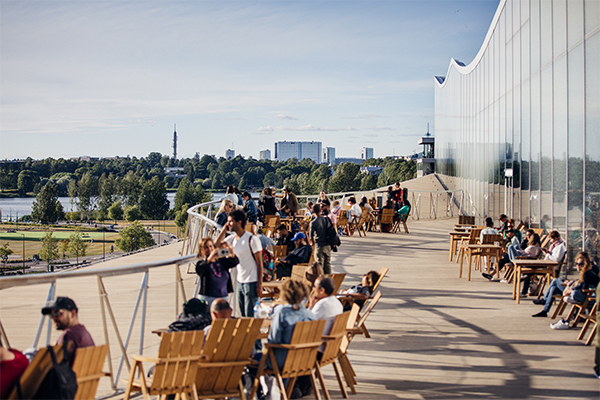Helsinki’s goal is to improve every day. For the past four years, this goal has been pursued through the implementation of the Helsinki City Strategy 2017–2021, subtitled The Most Functional City in the World. A summary has been produced of the implementation of the strategy, which outlines the city’s greatest achievements, areas still in need of improvement, and lessons learned during the strategic planning period.
Helsinki City Council adopted the strategy in September 2017. The strategy has set the course for the city’s operation and financial planning over the present Council’s term of office.
“Becoming the most functional city in the world is ultimately about actions. We have addressed everyday challenges facing the local community on the one hand and looked for solutions to global issues affecting the entire humanity on the other. What has been particularly important to me is the way in which this strategy has touched not just the city organisation but also each and every resident”, says Mayor of Helsinki Jan Vapaavuori.
Five strategic priorities
Helsinki’s vision of being the most functional city in the world has been pursued through five strategic priorities: becoming the most functional city in the world, securing sustainable growth, developing services, responsible management of finances, and strengthening Helsinki’s promotion of interests.
“We have worked hard to promote these objectives. I am proud of the transformation that I can clearly see in our organisational culture and how the whole city has come together to make Helsinki the most functional city in the world. I feel privileged to be able to say that Helsinki today is much more modern and international than it was four years ago”, Vapaavuori says.
The City Board adopted around 50 objectives and approximately 140 performance indicators on the basis of the five strategic priorities. An assessment based on the performance indicators reveals at least the following achievements during the strategic planning period:
- Good progress has been made towards securing sustainable growth in respect of reforming Helsinki’s urban structure and housing as well as meeting emission reduction targets. Enrolment in early childhood education has also increased.
- Regarding developing services, a more customer-orientated approach has been adopted for basic services and digitalisation has progressed. Concrete examples include the introduction of a continuous learning pathway from local early childhood education to basic education, a higher standard of home-based support for the elderly and services designed to help people to live independently, as well as new milestones in the promotion of physical activity. The pace of digitalisation has accelerated, and the standard of the city’s distance services has improved.
- Apart from not hitting the productivity target, the city succeeded in the responsible management of finances during the first part of the present Council’s term of office. The impact of the coronavirus pandemic is making economic targets more difficult to achieve, and indebtedness is likely to increase despite the Council’s responsible financial management in earlier years having given the city every chance to come out of the crisis relatively unscathed.
- In respect of the promotion of Helsinki’s interests, cooperation with other Finnish towns and cities has increased considerably and the city has successfully raised its international profile.
Introduction of new operating models facilitated by the coronavirus pandemic
The coronavirus pandemic created a number of unprecedented and unpredictable changes in the external environment during the strategic planning period. Despite its seriousness, the pandemic has actually facilitated the introduction of new operating models.
The city’s crisis management model was deployed quickly and adapted to the rapidly evolving situation. Digitalisation has progressed during the pandemic and provided an opportunity for faster implementation of the city’s digitalisation programme. The crisis management model has facilitated strategic forecasting and helped to create a faster and more agile organisational culture while also improving teamwork. This has been reflected in, for example, the introduction of a new, more agile approach to developing services for the city’s residents, such as a city-wide helpline for Helsinki’s elderly population, the distribution of free masks to people in need, and outdoor dining in the Senate Square.
Read more about the implementation of the Helsinki City Strategy 2017-2021 here.
Watch videos about the strategy 2017-2021 here.
Photo: Jussi Hellsten

